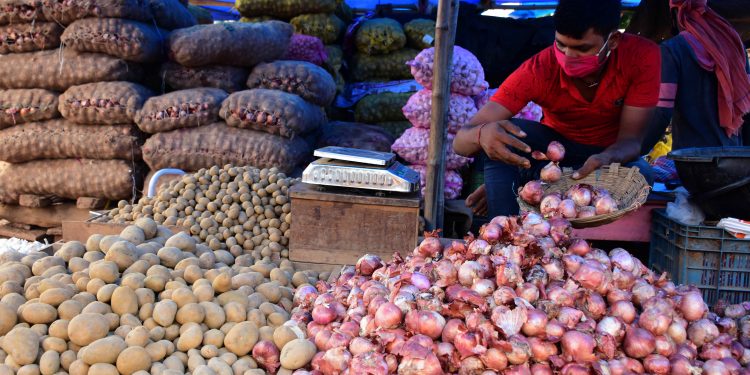Skyrocketing prices of kitchen essentials continue to harass the common man. Most vegetables have remained out of bounds for the poor. Onions and potatoes are getting less visible in kitchens. Only the upper-middle class and the ultra rich from amongst us can afford to buy them. With the Odia month of Kartika a few days away, the demand for vegetables in the state is set to further soar and with that their prices will go up. In our state, onions and potatoes are the only vegetables whose prices tend to spiral out of reach within days of their breakout. Other vegetables, most of which are locally produced, remain more or less steady or, at the worst, take time in gaining prices. As Odisha is prone to natural calamities, imports of perishables from other states remain vulnerable to price vicissitudes. Natural disasters such as cyclones and floods disrupt road communications. Vast stretches of national highways are washed away cutting off communication links to the state. Transportation goes haywire at the slightest natural disaster. Yet, little has been done to find a lasting solution to this problem. Short-term measures like raiding hoarders, capping stocks and, on the all-India level, blocking exports or incentivising imports are taken to soften the prices. However, these measures by their very nature fail to deliver the goods. They only serve to bring in temporary relief. Also, these actions, being inherently pro-consumer and anti-producer, deter farmers from raising their farm output, thereby perpetuating rather than mitigating the price instability. This time round, the government, both at the Centre and the state, have reacted to the problem in a similar fashion. Ipso facto, the results are bound to be temporary. Can’t the government throw its blinkers now and think out of box to find a lasting solution to this nagging crisis?
The failure of the government to create effective agro infrastructure in the state has resulted in finding a permanent solution to price shocks. Incentivising private players to create farm infrastructure could be an option worth considering by the government. Odisha is a consumable surplus state in paddy. However, it does not have enough warehouses to preserve the commodity. Farmers here grow paddy not as a choice but under compulsion as they do not have an alternate crop to fall back on. The total consumable surplus of rice in the state is around 35 lakh metric tonne, while the total installed capacity of warehouses does not exceed 15 lakh metric tonne. Of this, nearly 13 lakh metric tonne of space is government-owned, while hardly 2 lakh metric tonne is privately owned and, hence, scattered around the state. There is an urgent need to create additional storage capacity so that farmers here can be encouraged to produce more. In Kalahandi district, onion farmers were forced to sell their produce at `5 p/kg which they are now buying at `80 p/kg. They had been forced to resort to distress sale as there was no storage capacity in the district. Last year, the district had around 2,500 hectares of onion crop with a projected output of 38,000 tonne. Farmers in Dharmagarh, Golmunda, Jaypatna, Koksara, Kalampur, Junagarh, Borda, Gurjang, Artal, Kuliamal, Madiguda panhayats and many panchayats in Kesinga and Madanpur Rampur had grown onions. However, due to lack of storage facilities in the district, onion farmers resorted to distress sale. Fearing losses, many old onion farmers are turning away from the crop this year. Inviting private investment in development of agro storage could encourage such farmers. Even large numbers of farmers in Bolangir, Boudh and Kandhmal districts grow onions. Local availability of storage space and creation of market linkages for their produce will go a long way in encouraging them to grow the tuber. The ‘Make In Odisha Conclave’ should invite corporate houses who could invest in building agro infrastructure in the state. This could be one way of sobering the price volatilities of agri produce and reduce the state’s dependence on other states.






































